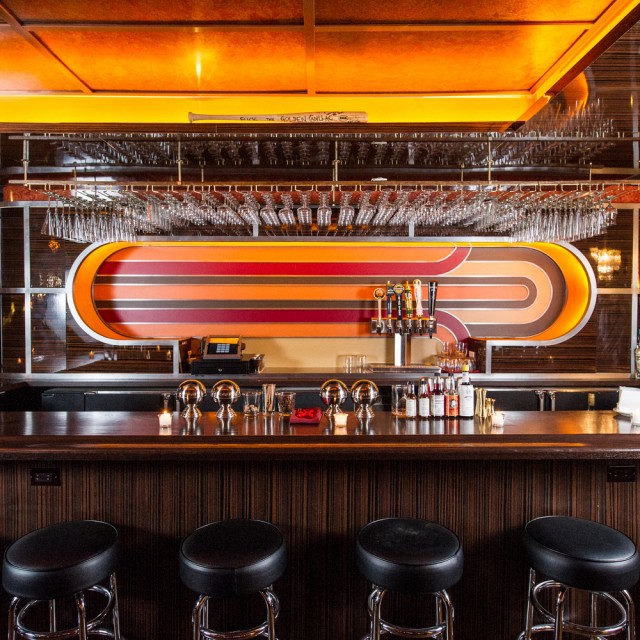The Limits of Revivalism

Humans naturally gravitate toward easy chronologies, since it’s how our brains work or whatever. So it’s logical that after we all secretly teleported back to the vague (and vaguely historical!) era of “pre-Prohibition” to find a fancy booze culture worth restoring and replicating in metropolises across the globe, we would then creep forward in time from those hazy origins of the late eighteen hundreds or early nineteen hundreds, and revivify and adapt what we found next.
But, recently, as we progressed from Jerry Thomas’s Improved Whiskey Cocktail through Harry Craddock’s Corpse Reviver #2 and Trader Vic’s Planter’s Punch, we slipped into the hazy era between the fifties and the seventies when our parents, and their parents, finished the long work of Prohibition and ruined cocktail culture completely. In 2013, two places in New York, The Butterfly and Golden Cadillac, revived that particular strain of baroque and often disgusting mid-century food and drink culture, but like you know, with good ingredients and care, man.
The Butterfly, taking its inspiration from mid-century Wisconsin supper clubs, offered drinks like a reformed Grasshopper:
At the base of our Grasshopper is crème de cacao and crème de menthe. We add a bit of backbone with aged rum and a bit of depth with the minty Italian Fernet Branca Menta. Orange juice is added for acidity, and a bit of water thins the mix out. Un-homogenized milk is heated to boiling and lemon juice is added while still hot. The lemon juice turns the milk solid and all the color from the Fernet, rum and cacao are removed. It is a very labor intensive process to strain the punch until it runs clear.
And a refined Whiskey Sour:
As mentioned in the Tom Collins description, sour mix was very popular when entertaining at home during the middle of the 20th century. The whiskey sour is a very early cocktail found in many old cocktail books but it really rose to prominence in the 1960’s. My father’s favorite drink is made fresh here at The Butterfly rather than with bottled sour mix. Maple syrup adds a bit of Americana to this version and Angostura bitters adds a bit of depth to what is a very simple but satisfying drink.
There’s also an Old Fashioned whose description is as long as two Knausgaard novels. The Golden Cadillac, which went full seventies — in the decor, the vibe and the bathroom wallpaper — turns out Hot Buttery Nipples with “butter-and-cacao-infused Jameson,” Long Island Iced Teas, but taken seriously, and the “70s old fashioned,” which means “rye, brandy, honey, orange, cherry, bitters.”
Anyways, this whole trend of sorts has been mildly upsetting to Jim Meehan of PDT, perhaps the ne plus ultra of the speakeasy bars, which one enters through a phone booth in a hot dog joint. (It is, in fairness to over-the-top theatricality, the best of the New York speakeasyish bars.) The other week, Meehan groused:
People who are probably not the best students of history have started pushing the historic pendulum a little too far forward. I don’t think we should be drinking Long Island iced teas again. I don’t think we should be drinking these disco-era drinks because, from a historical perspective, we know once we start serving those, people stop drinking cocktails. We know what happens next. Instead of pushing us into the ’60s and ’70s, which is like jumping off a cliff, we need to make cocktail bars fun and we need to make them accessible, but we don’t need to make ourselves obsolete.
It turns out that Meehan was correct, insofar as Golden Cadillac is closing tomorrow, to reopen with a different concept, even though of the two, Golden Cadillac managed to pull the gambit off more successfully than The Butterfly, whose drinks would not shake a certain quality of uncanniness that made them mildly unpleasant to quaff.
The lesson, if there is one, is to leave the seventies where they are — and probably everything that came after them too.
